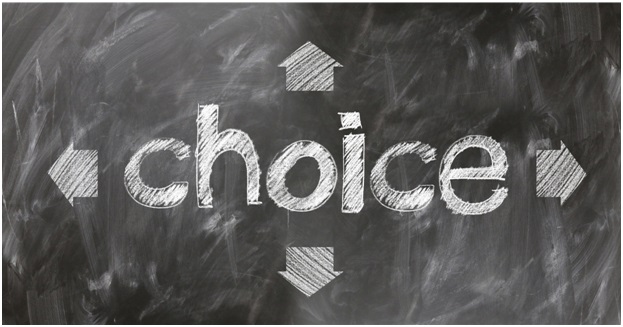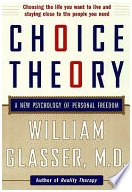A Coaching Model Created by Olga Labutina
(Executive & Transformation Coach, GREECE)
 Introduction:
Introduction:
In my work with corporate executives and top-managers, I usually employ my signature CHOICE coaching model that strictly follows ICF guidelines, Code of Ethics, and core coaching principles.
Long before stepping on a coaching journey and choosing this profession, I have always been fascinated as to why some people I encountered would own their life, acts, and thoughts, consciously understanding what they need to focus on to achieve their goals, or simply, how they need to think and behave to simplify or improve a certain situation.
On the other hand, there were always people, the majority, I have to admit, which knew what is that they need to do, how they need to treat a given situation, and yet they will CHOOSE to go back to their dysfunctional behavior or perspectives, trying to find excuses along the way on why they failed and whose fault it was.
It always seemed really bizarre as I myself have always been trying to shift my own perspective, change my mood, and just to choose to think in a certain way that will benefit me in the specific situation I find myself at a given moment.
These reflections made me interested in the concept and theory of choice, not the one that describes the consumption behavior or financial market processes, rather the choice we apply to our behaviors, the way we control them, and eventually, the way these behaviors constitute and influence our life.
Researching the subject made me realize how with a certain level of awareness we can influence our behaviors and change the undesirable patterns.
 I strongly relate to how William Glasser, M.D. presented this concept in his Ten Axioms of Choice Theory.
I strongly relate to how William Glasser, M.D. presented this concept in his Ten Axioms of Choice Theory.
Below I would like to present 4 of the 10 Axioms.
- The only person whose behavior we can control is our own.
- All we do is behave.
- All behavior is Total Behavior and is made up of four components: acting, thinking, feeling, and physiology.
- All Total Behavior is chosen, but we only have direct control over the acting and thinking components. We can only control our feeling and physiology indirectly through how we choose to act and think.
Based on the above, I believe that as a coach I can help my clients embrace the choice for behaviors that are obvious to them and that lay on the conscious surface as well as uncover the behaviors and beliefs which my clients stand unaware of and eventually help them apply a conscious choice in that case in order to achieve a lasting change in life and work.
The Choice Model
The model represents the path a coachee takes in the coaching process to create a lasting mindset and behavioral change. I usually apply this coaching model working with senior leaders and business owners, although I am convinced this model can be effectively used in any type of coaching client and coaching relationship.
As I have already mentioned above and as this paper implies, as a coach, I place dramatic importance on the concept of choice in my life and work.
I strongly believe that understanding the concept of choice is one of the main prerequisites for the client to achieve the real transformation – an overall holistic change I strive for my clients to experience in the course of our coaching relationship.
I am convinced that whatever thinking/feeling/behavioral acts and patterns we consciously and subconsciously choose to apply (and more importantly choose not to apply) in a specific situation play a pivotal role in the success or failure of the overall process.
Hence, embarking onto a coaching journey and engaging in a coaching relationship is a conscious choice that needs to be taken for coaching to bring the undeniably transformational results that are most of the time beyond the objectives stated at the start.
During the strategic discovery sessions, I always clarify to my coachees that for the coaching relationship to succeed and bring the expected or even beyond expected outcomes, a coachee consciously chooses to want to engage in the coaching relationship as well as chooses to embrace the process and to want the positive transformation (whatever it will be) to happen. For this reason, I have rejected several corporate coaching proposals where the coachee was clearly not ready to choose to want to be coached and to want the change.
When explained, the concept of CHOICE makes an astonishing impact on the executive – level coachees, introducing the initial awareness and the understanding of responsibility for their thoughts and actions.
Here is the CHOICE coaching model explained.
- The first and the most essential step that builds the foundation of my coaching work with my clients is their genuine and conscious CHOICE to engage in this transformational journey. In my experience, by choosing the coaching relationship and choosing to want the change to come the clients become more alert and aware of his mental states, thoughts, and feeling as well as behaviors. This helps us astonishingly quickly to identify the resourceful and the non-resourceful factors, move from the surface, and the situation to the conscious and subconscious “self” of the client.
- After the coachee and the coach are clear on the latter, the following stages unfold:
C – Consider goals
This is the second step(following the CHOICE step explained above) in the agreement between the coach and the coachee that establishes the goals and objectives for the overall coaching journey taking into account the situation and the self of the coachee, the rationality and the real desire behind the stated goals.
H -reveal Horizons
horizons as the limit of what the client sees, thinks, feels in her worldview about herself or her situation. In other words, what is holding her back, what is not letting her grow? Together with the client, we reveal the mental limitations and obstacles which are standing in the way of success
O – Open up
The coach encourages the client to open up (providing a comfortable and comforting space, active listening and various rapport-building techniques (as per the ICF principle and standards) for the client to be able to look deeper into herself reveal the feeling/ thinking/ behavioral patterns that need to be worked with.
I – Investigate
Following the previous step, we investigate the feeling/ thinking/ behavioral patterns that need to be worked with.
To change the behavior or the limiting belief it
C – Change/Create
Once we have investigated and unveiled the limiting patterns and believes, the client will consciously choose
to change dysfunctional feeling/ thinking/ behavioral patterns, recreate or apply the existing functional patterns to other parts of her life or create new ones from scratch to achieve a thorough lasting transformation.
E – Evolve
The coach invites the client to reflect on the feeling/thinking/behavioral change created in the coaching journey to empower the client to solidify and entrench the positive shift achieved through the coaching relationship.
The client evolves in various areas of life thriving on the transformation achieved through the coaching journey.
At this point, the coaching relationships usually shift towards an ongoing support format as the client has already experienced the transformative nature of coaching and its ultimate benefits, and would like to continue benefiting from this personal development journey further.
Conclusion:
The coaching model discussed above has not only proven itself to create a lasting transformation for the clients, showing the importance of the awareness of the choice they make with every thought and behavior, but has received an outstanding appreciation from the clients themselves at the very start of the relationship and set the whole coaching journey for success early on.
References:
Glasser, W., M.D. (1998) Choice Theory